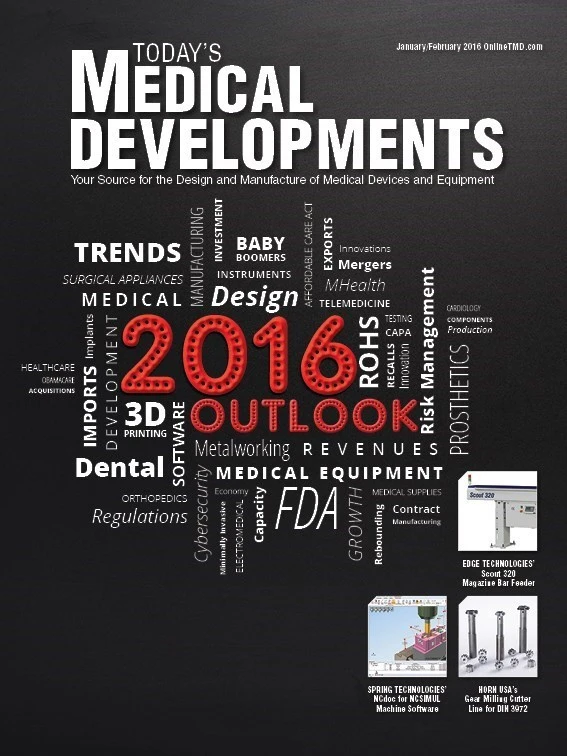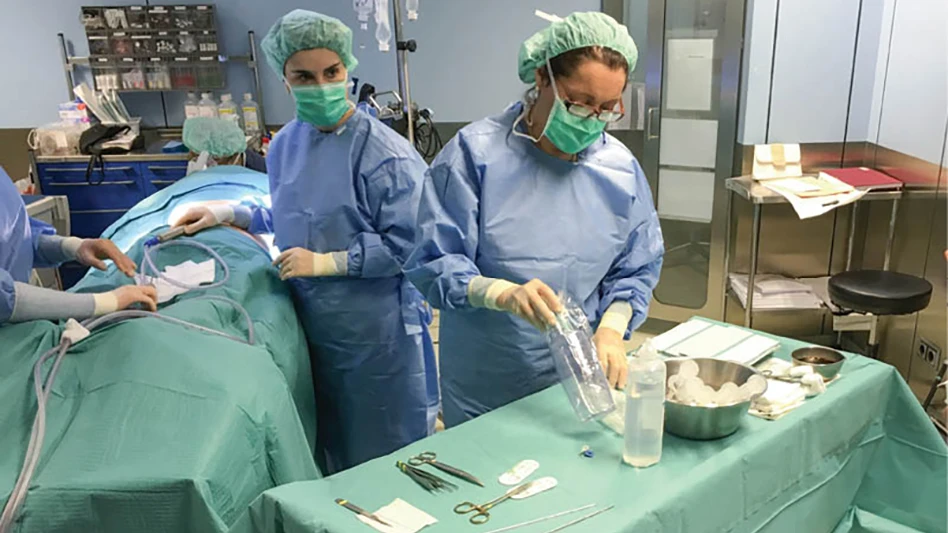Each fiscal year, the U.S. Food and Drug Administration’s (FDA) Center for Devices and Radiological Health (CDRH) identifies regulatory scientific priorities the department plans to pursue in the following 12 months. For the FDA’s 2016 fiscal year, several priorities have been listed (http://goo.gl/ozt27U) to which medical device designers and engineers should pay attention.
CDRH regulatory science priorities indicate where the center plans to allocate research funding over the course of the next fiscal year, and show U.S. medical device market registrants where to allocate design and development resources to line up with regulators’ interests.
Whether any of the CDRH’s 2016 priorities result in new or revised regulations remains to be seen, but knowing what U.S. regulators are focusing on helps manufacturers anticipate and prepare for impacts and adjust product design and development practices.
Big Data’s bigger role
One top priority identified by CDRH for 2016 is relying more on Big Data in the division’s regulatory decision-making process. Databases for clinical trials, the human genome sequence, and other health information should be used more thoroughly to evaluate medical device performance, safety, and quality, according to the CDRH.
Making better use of such health data warehouses will require CDRH to implement capabilities and technologies to collect, store, and analyze this information with the aim to streamline device review processes and more proactively identify potential post-market issues.
As CDRH takes steps to leverage big data sources more thoroughly, device manufacturers need to familiarize themselves more closely with these same data sources to better anticipate how FDA reviewers will approach pre-market applications.
Human factors, device design
Another CDRH focus is greater incorporation of human factors engineering into medical device design. Making human factors issues a priority reflects U.S. regulators’ intent to be more proactive to post-market adverse events and recalls.
In many adverse events and recalls, human factors engineering issues such as usability and design flaws are to blame, so the CDRH plans to develop and implement tools and technologies to better evaluate device design and usability.
This CDRH priority for device designers and manufacturers has clear implications – the more attention manufacturers pay to usability and design efforts prior to submission for pre-market review, the less likely FDA reviewers will take issue with the human factors engineering aspects of their products.
Cybersecurity concerns
As more medical devices are designed to function digitally in networked environments, security for users and patients of such devices has become paramount. U.S. regulators acknowledge that they face a steep learning curve when it comes to cybersecurity of networked and digital devices compared to traditional stand-alone devices, but identifying the need for enhanced cybersecurity in its list of 2016 priorities shows that CDRH will scrutinize premarket applications to see that appropriate security measures are incorporated into relevant device designs.
CDRH also plans to improve its understanding of how software and devices interact on an ever more complicated level, and will conduct further research into issues including interoperability and software modification. As regulators conduct more research into how best to address device cybersecurity, manufacturers should enact and document all steps taken to ensure their products contain adequate security components.
In late 2014 the FDA issued guidance (http://goo.gl/IhYhGx) on what the agency expects of U.S. market applicants in cybersecurity measures: Identifying device vulnerabilities, assessing how threats and vulnerabilities would affect patients and users, and determining cybersecurity risk mitigation processes. Similar steps are required of manufacturers during design and development phases of their products. However, as cybersecurity issues continue to evolve – and as medical technology becomes more advanced – U.S. regulators will also likely amend and update their requirements and recommendations for manufacturers.
Material performance
CDRH is also interested in more effective tools for determining how different component materials affect device performance, safety, and quality.
Improving capabilities to predict clinical impact of new materials – surface coatings and additive manufacturing, for example – will drive development of more effective device materials and ultimately improve longer-term clinical performance and safety. While this priority may have little short-term impact on manufacturers’ design and development efforts, firms that take the initiative and investigate alternative material designs and sources may stand to gain from future CDRH actions based on the center’s burgeoning focus on this issue in 2016.
The ability to anticipate CDRH actions should not be lost on companies seeking longer-term opportunities in the U.S.
Emergo
About the author: Stewart Eisenhart is senior regulatory analyst at Emergo, a Texas-based regulatory consultancy serving more than 2,500 medical device and in vitro diagnostic (IVD) companies worldwide. Eisenhart can be reached at 512.327.9997.

Explore the January February 2016 Issue
Check out more from this issue and find your next story to read.
Latest from Today's Medical Developments
- Best of 2024: #4 Article – Sticking to the basics
- Best of 2024: #4 News – Point of care manufacturing
- Best of 2024: #5 Article – Accelerating medical device development with freeform injection molding
- Best of 2024: #5 News – Complexity, the enduring enemy of medical cybersecurity
- Best of 2024: #6 Article – Closing the global product information gap
- Best of 2024: #6 News – NUBURU enters medical device market with order Blueacre Technology
- Season's greetings
- Best of 2024: #7 Article – Synchronized machining processes for medtech





